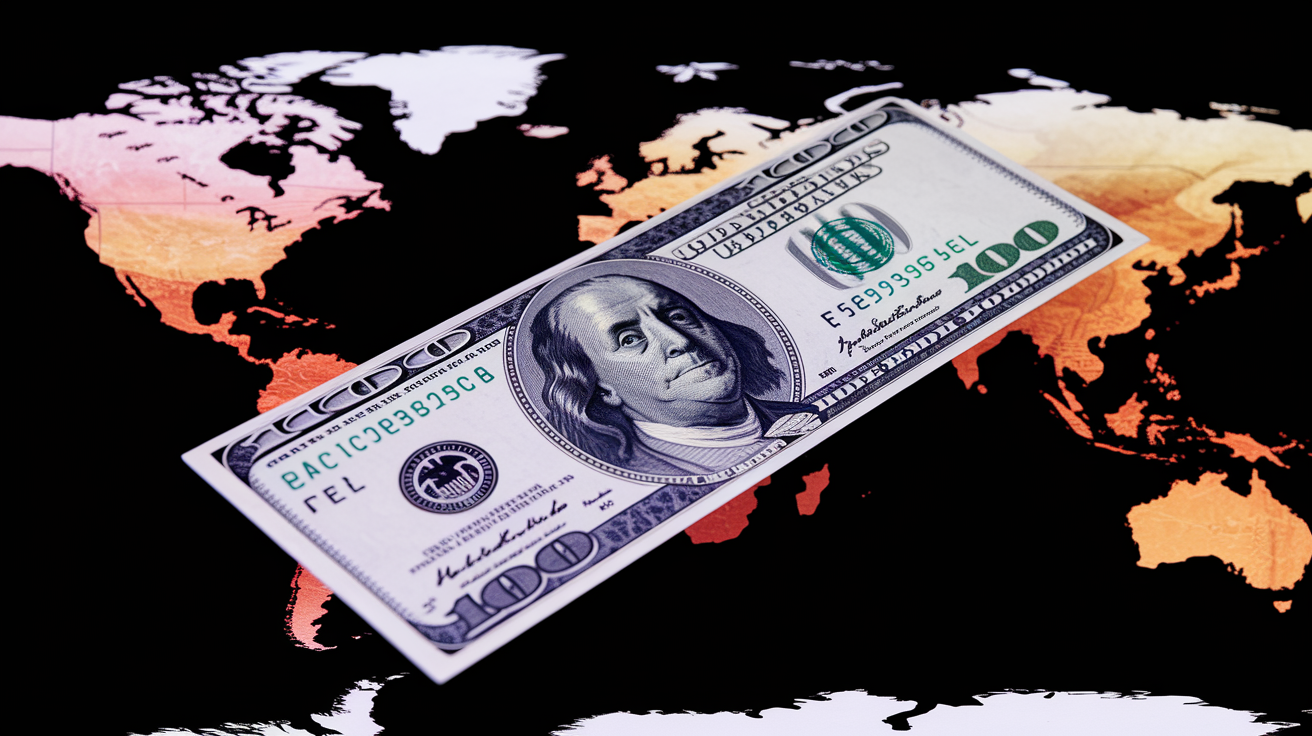The dance between the US dollar and the Chinese yuan on the stage of global trade is more than just an economic note. These two currencies influence not only economic policy but also investor decisions worldwide. While the dollar is considered a veteran of international trade, the yuan represents an emerging power that is gaining increasing influence. The following chapters highlight current developments and their importance for investors and private savers.
The US Dollar: An Anchor of Global Economic Stability in Uncertain Times

Since the end of World War II, the US dollar has established itself as a dominant force in international trade and as the preferred global reserve currency. This predominant position is closely linked to the economic and political strength of the United States. However, the dollar is increasingly facing challenges that could affect its continuing role in the global economy.
The origins of the US dollar date back to 1785. It was officially elevated to the currency of the United States in 1792. After World War II, within the framework of the Bretton Woods system, the dollar was tied to gold, significantly boosting its confidence and stability. However, with the end of gold convertibility in 1971 by President Nixon, the dollar transformed into a fiat currency. This change did not significantly affect its role; the US dollar remained the dominant currency.
The unparalleled stability of the US dollar is explained by several factors. First, the dollar serves as the preferred reserve currency globally, held by many central banks. This fact not only increases demand but also grants unprecedented stability. Second, the United States is home to the world’s largest and most liquid financial markets, making the dollar an attractive asset for investors. The political and economic power of the United States further strengthens confidence in the currency.
Despite these strong foundations, the dollar faces significant challenges. The so-called Triffin dilemma describes the difficult task of providing both a stable domestic economy and global liquidity. A persistent trade deficit could undermine confidence in the dollar. Political uncertainties and measures such as tariffs could endanger the value of the dollar and bring greater uncertainty to the global economy. Finally, there is also growing competition from other currencies such as the euro or the Chinese renminbi, which seek to dethrone the dollar as the world’s reserve currency.
The International Monetary Fund (IMF) plays a crucial role in maintaining balance within the global monetary system. The IMF supports countries facing balance of payments problems and promotes sustainable economic growth. These efforts are essential for preventing financial crises and ensuring global economic stability.
The US dollar remains a reliable anchor of stability in the global economy, even as it becomes increasingly exposed to new challenges. The role of the IMF is essential in ensuring a stable financial landscape. Despite substantial changes within the global economic area, the dollar continues to be an indispensable currency in international trade due to its central importance and the historical strength of the United States.
The Yuan as a Strategic Player in the Global Financial System

The remarkable rise of the yuan in the global financial system is at the center of China’s ambitious economic and political agenda. While the US dollar has been the undisputed standard in international trade for decades, China is seeking to make the Chinese yuan, also known as renminbi (RMB), an equally recognized currency. These shifts symbolize not only China’s economic ambitions but also its targeted steps to restructure global power dynamics.
The Yuan as a Reserve Currency
The yuan is gaining increasing importance as a reserve currency. This means that various central banks are beginning to include the yuan in their currency reserves, which represents a strong vote of confidence in the stability of the Chinese economy. The greater acceptance and integration of the yuan into the basket of international currencies also has the consequence that many countries are considering diversifying their reserves, further expanding the influence of the yuan beyond Asian borders.
The Digital Yuan: Pioneer of a New Payment Landscape
Another revolutionary step for China is the development and testing of the digital yuan, a central bank digital currency (CBDC). This push towards the digital financial world could not only make the yuan more efficient but also position it as a leading digital currency. The introduction of the digital yuan promises a revolution in payments and could significantly simplify international networks and investment flows, while also reinforcing China’s goal of making its domestic economy less dependent on external factors.
Geopolitical Implications and Strategies
China’s expansive economic strategies, illustrated by the Belt and Road Initiative (BRI), have sustainably transformed the global trade landscape. This initiative attracts investments in infrastructure worldwide and consolidates China’s influence. At the same time, China is using its economic recovery to cultivate strategic alliances, such as within the BRICS nations and the Shanghai Cooperation Organization (SCO). These alliances aim to strengthen China’s geopolitical presence and expand its sphere of influence.
Challenges and Global Implications
The rise of the yuan is at the center of growing political and economic competition between China and established powers like the United States. This development could lead to a paradigm shift in international trade agreements. Additionally, the attractiveness of foreign investments in China’s robust economy entails opportunities and risks, especially regarding global dependencies and economic hegemony.
In conclusion, the yuan is more than just a currency; it is a symbol of China’s ambitious goals on the world stage. The dynamic role of the yuan in the global financial system reflects the geopolitical changes triggered by China’s economic strategies and technological innovations.